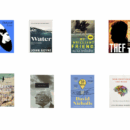‘Me-too’ strategies are a waste of time
“When United Airlines decided in 1994 to compete with Southwest (Airlines) in the intra-California marketplace, the company tried to imitate Southwest. United put its gate staff and flight attendants in casual clothes; it flew only Boeing 737s; it gave the service a different name, “Shuttle by United,” and used separate planes and crews; it stopped serving food; it increased the frequency of its flights and reduced the scheduled times planes spent on the ground, copying Southwest’s legendary quick turnarounds. Southwest, however, wound up with a higher market share in California than it had before United launched its imitation. The Shuttle failed and is now shuttered.”
JEFFREY PFEFFER and ROBERT I. SUTTON, Hard Facts, Dangerous Half-Truths and Total Nonsense (2006)
Professors Pfeffer and Sutton have written a highly engaging and provocative book, and at the centre of what makes them mad is the mindless ‘me-too’ imitation and benchmarking that they see so many companies doing.
Take the example shown in the excerpt. Southwest Airlines is the company par excellence showcased in many a business school and management book, the darling of management gurus. And rightly so: the airline is a genuine game-changer that reinvented the airline business, pioneering the value-airline concept in 1992. Its no-frills approach and low ticket prices brought in customers by the droves, and by the 1990s the traditional American carriers were hurting badly.
So what did one of them decide to do? Copy mindlessly. It looked at the obvious manifestations of Southwest’s revolutionary approach, and tried to match it identically. Are you surprised that it failed? You should be: life rarely rewards the mimic, the copycat, the follower. Strategic success is in leadership, not benchmarking.
Southwest’s success is not about its uniforms, or the type of planes it flies, or its scheduling. Rather, those things are the result of a fundamental business model and philosophy – a way of being. If you want to copy Southwest, you have to replicate that philosophy from its roots, and you have to do it every day. Southwest has a legendary focus on its employees and its customers – that is its very essence. You don’t copy that – you have to BE it.
Other examples: Toyota’s key competitive advantage is its lean manufacturing model. But so confident is the company that this cannot be copied, it throws open its factory floors to all comers. In fact, the Toyota factory-floor system is one of the most highly documented business features there is. So, were its competitors able to copy it and take advantage? Last week’s historic bankruptcy of the daddy of them all, General Motors, tells the story.
In Kenya, Serena Hotels sets the standard as a hospitality chain. Its warm and friendly customer service is renowned across the country. So why don’t the others just copy it? Because you can’t copy a feeling: staff connect with clients because they feel connected to the company. They don’t do it because it’s in a manual; they do it because they are part of a culture that places the customer first at all times. That culture takes decades to build and perfect. The best competitive advantages are unseen; they reside in the mind rather than the shop floor.
In Kenya, we have a dangerous fondness for the me-too. Many aspiring businesses copy market leaders blindly and unthinkingly. They copy names, logos, premise branding – the works. They get nowhere. All they do is highlight the fact that they are followers and mimics. Think about it: what position do you want to be in: the copier or the copied? Management teams would do much better focusing on originality and uniqueness, rather than perpetual benchmarking. Don’t try to look more like your main competitors – try to look LESS like them. In crowded marketplaces, distinctiveness is all.

Buy Sunny Bindra's new book
The X in CX
here »
Popular Posts
- My books of the yearDecember 14, 2025
- Here’s why you should become foolishNovember 30, 2025
- Confessions of an explaining personDecember 7, 2025
- How to listen, really listenNovember 16, 2025
- Is AI hiring your company into oblivion?November 23, 2025















